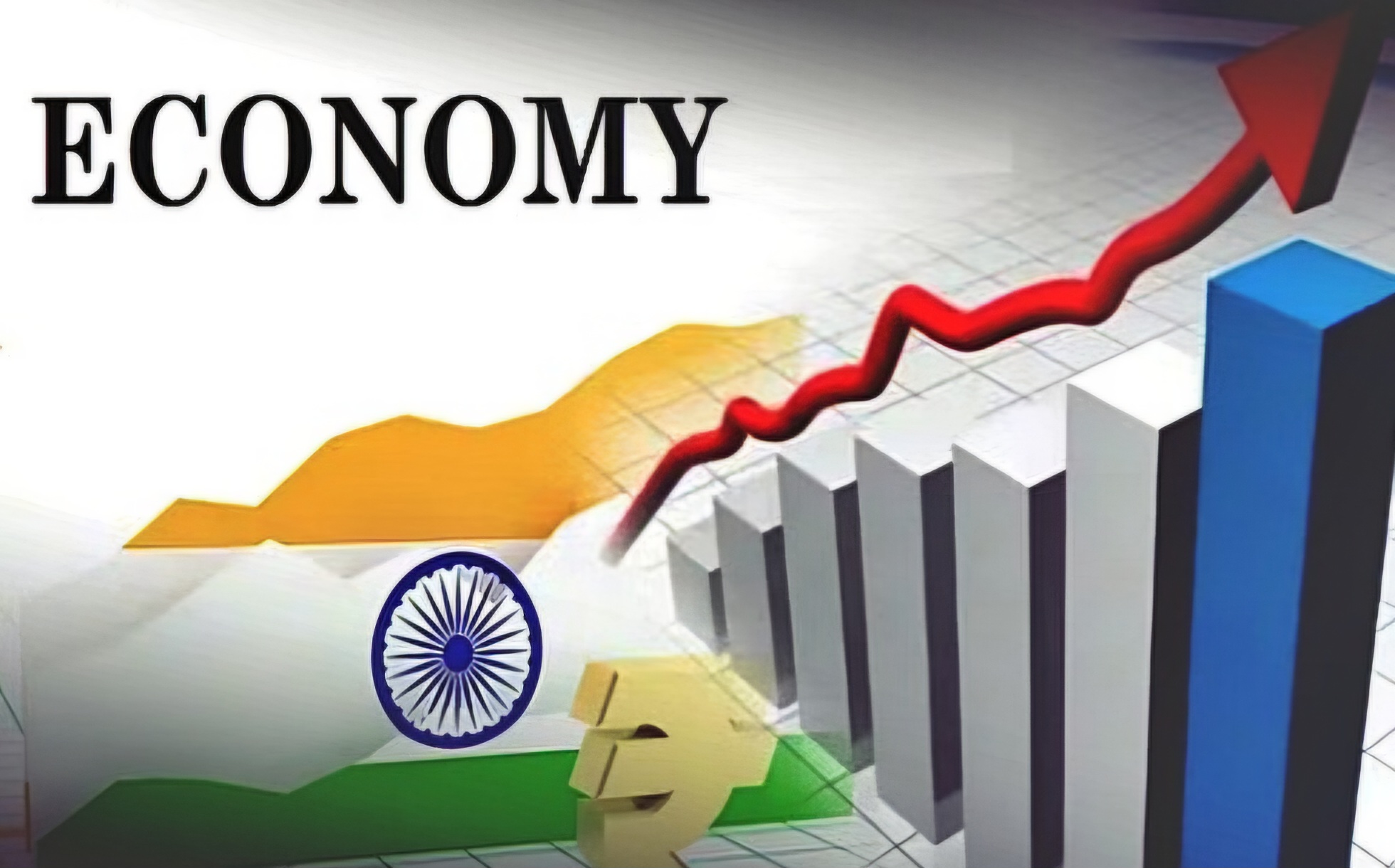
New Drivers of Growth
India’s Economic Rethink Beyond Trade
GK & Current Affairs for CLAT | CLAT Current Affairs 2026
Powered by CLAT Gurukul – Best online coaching for CLAT
Why in News:
With rising global trade tensions and domestic structural challenges, India is facing new economic disruptions, such as:
- China’s curbs on rare earth exports.
- Withdrawal of engineers from Foxconn’s iPhone plant.
- Growing imbalance in trade with China.
This article raises an important debate: Should India continue depending heavily on trade-led growth, or does it need new internal drivers for long-term prosperity?
This is highly relevant to CLAT 2026 aspirants as it touches upon:
- Economics-based current affairs,
- Governance and constitutional principles (federalism, policy shifts),
- And analytical thinking needed in Legal Reasoning and Current Affairs sections.
Introduction:
India aspires to become a developed nation by 2047, the centenary year of independence. However, recent global economic changes, especially curbs by China and supply chain disruptions, have exposed the fragility of India’s dependence on trade for economic growth.
In this context, the article critically examines:
- The limits of trade as a development pathway,
- India’s historical policy evolution,
- The need for new economic strategies that prioritise self-sufficiency, inclusive growth, and technological innovation.
Point-wise Summary:
- Immediate Trigger: China’s Economic Actions
- China imposed restrictions on rare earth and fertilizer exports.
- Engineers withdrew from Foxconn’s iPhone plant in India.
- These events raised questions about India’s economic dependence on China and global supply chains.
- Larger Concern: Fragile Growth Model
- India’s reliance on external trade, foreign capital, and global integration is proving risky.
- Global shifts in trade patterns and strategic competition (especially with China) signal a need for self-reliant development strategies.
- Historical Economic Strategies
- Early Indian governments focused on political stability over economic growth, particularly post-Independence.
- Partition, princely state integration, and constitutional centralisation promoted a strong Centre.
- Development planning followed a state-led model, with sluggish growth and little emphasis on private-sector reforms.
- Policy Shift in 1991: The Development Bargain
- The 1991 economic crisis changed India’s focus to growth.
- The reforms led by Narasimha Rao and Manmohan Singh introduced liberalization and market-friendly policies.
- Economist Stefan Dercon calls this shift a “development bargain” — an implicit contract between political leaders and citizens to pursue growth.
- Coalition Era Reforms
- 1991-2014 saw a shift in power from one-party dominance to coalition politics.
- Despite political fragmentation, governments under Vajpayee, UPA I & II carried out major reforms.
- The NDA under Vajpayee doubled investments and reformed telecom, power, and roads.
- Limits of Globalisation
- The 2000s saw rising trade liberalisation under the belief that “global trade lifts all boats.”
- However, rising inequality and discontent (e.g., post-2008 crisis, Trump-era policies) showed that free trade had limitations.
- India, too, has not benefitted equally across all sectors and regions.
- Decline of Trade-Led Growth Model
- India’s growth, which was earlier fueled by exports and capital flows, is now vulnerable to:
- Global supply chain disruptions.
- Protectionist policies of trading partners.
- Overdependence on select sectors.
- Need for New Economic Model
- India must diversify its growth strategy beyond trade.
- Focus should shift to:
- Domestic manufacturing (e.g., Production Linked Incentive Schemes).
- Digital economy.
- Skill development.
- Sectors like AI and IT, which offer scalable job opportunities.
- Challenges Ahead
- India still faces:
- Low female labour participation.
- Poor job creation in manufacturing.
- Low investment in innovation and R&D.
- Despite steady GDP growth (5.7% last fiscal), the quality of growth needs scrutiny.
- Urgent Call for Reforms
- India must pursue:
- Inclusive growth, especially for rural and poor populations.
- Decentralised economic models, empowering states and local bodies.
- Job-centric reforms in health, education, and skilling.
Notes: Key Terms Explained
- Development Bargain: An implicit contract where political leaders commit to prioritising economic development in exchange for political legitimacy.
- Production Linked Incentive (PLI) Scheme: A government initiative offering financial incentives to boost manufacturing and reduce dependence on imports.
- Coalition Era: A period in Indian politics post-1991 where no single party had absolute majority, leading to shared governance among multiple parties.
- Free Trade: Economic policy where countries exchange goods and services with minimal restrictions, tariffs, or quotas.
- Protectionism: Opposite of free trade, where countries protect domestic industries using tariffs, import restrictions, etc.
- Rare Earth Elements: Critical minerals used in electronics, renewable energy, and defense technologies; heavily controlled by China.
- Digital Economy: Economic activities based on digital technologies, including e-commerce, fintech, and IT-enabled services.
- New Drivers of Growth: Emerging sectors or strategies such as green energy, AI, localised production, and skill development aimed at sustainable economic expansion.
Relevance to CLAT 2026 Aspirants:
This editorial is extremely relevant for CLAT aspirants in the following ways:
- Current Affairs Section
- Sharpens understanding of economic reforms, global trade, and India-China relations.
- Aids reading comprehension through editorial-level vocabulary and analytical writing.
- Legal Reasoning & GK
- Trains students to analyse policy decisions, constitutional priorities (federalism, planning), and their legal-political impact.
- Could be used in passages testing analytical reasoning based on policy vs legal framework.
- Essay Writing & WAT
- Ideal content for essays on topics like:
- “India@2047: The Path to Development”
- “Trade vs Self-Reliance”
- “Globalisation and its Discontents”
Integration with Keywords for CLAT Gurukul Website:
For optimal website SEO, the following keywords should be embedded naturally:
- “best online coaching for CLAT”: This article is crucial reading material for students enrolled in the best online coaching for CLAT who are preparing to understand economic and policy dimensions in depth.
- “online coaching for CLAT”: Students attending online coaching for CLAT must analyze such editorials for improving their current affairs understanding.
- “CLAT Current affairs 2026” and “Current Affairs 2026”: This topic can directly appear in CLAT Current Affairs 2026 section as a passage or as a background for comprehension-based questions.
Conclusion:
India stands at a critical economic crossroads. The time-tested route of trade-led growth now faces serious structural challenges. Rising geopolitical tensions, trade disruptions, and unequal domestic benefits from globalisation point to a sobering reality: India must identify new drivers of economic growth.
From digital transformation and AI innovation to localised manufacturing and inclusive skilling, India’s policymakers must forge a bold new path to development. Only then can we move closer to the dream of becoming a developed country by 2047.
For CLAT 2026 aspirants, this editorial provides a goldmine of concepts that blend policy analysis, constitutional economics, and global strategy — themes increasingly tested in CLAT’s evolving exam structure.
This Blog is Powered by CLAT Gurukul — India’s Leading Law Entrance Prep Platform
At CLAT Gurukul, we believe in empowering future legal minds with the right blend of knowledge, strategy, and mentorship. This blog is a reflection of our commitment to quality content that not only helps aspirants stay updated but also sharpens their conceptual clarity.
Why CLAT Gurukul?
- Personalized Mentorship by Top Legal Educators
- Comprehensive Study Materials & Legal Updates
- Daily Practice Sets, Mocks & Performance Tracking
- Result-Oriented Strategy for CLAT, AILET, and CUET
Whether you’re reading this article to deepen your understanding or to stay ahead in your exam prep — you’re already one step closer with CLAT Gurukul by your side.
Join thousands of successful aspirants who trusted CLAT Gurukul and cracked India’s top law entrance exams.
Visit https://www.youtube.com/@CLATGurukul/shorts to learn more or speak to our experts now!
Note from CLAT Gurukul
At CLAT Gurukul, we are committed to providing free CLAT study material, including CLAT current affairs, legal reasoning practice sets, general knowledge updates, logical reasoning questions, English comprehension exercises, and more — all curated by top mentors.
Our blog section is regularly updated with high-quality CLAT content tailored to match the evolving pattern of the CLAT UG exam. Whether you’re looking for CLAT 2026 current affairs, CLAT legal reasoning passages, or mock practice sets, we have you covered.
We believe in open-access learning and will continue to publish free CLAT preparation resources to help serious aspirants succeed.
Explore more free content under categories like:
Best online coaching for CLAT, CLAT current affairs, CLAT GK updates, CLAT legal updates, CLAT logical reasoning, and CLAT English preparation.
For structured learning, daily mocks, and expert mentorship, visit https://www.youtube.com/@CLATGurukul/shorts — the Best CLAT Coaching in Patna and India’s most trusted platform for CLAT online coaching.




